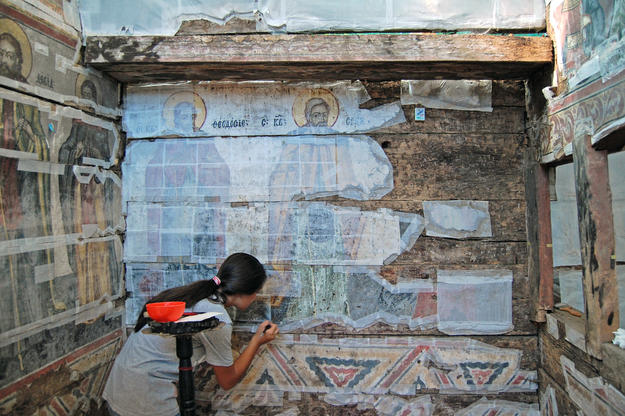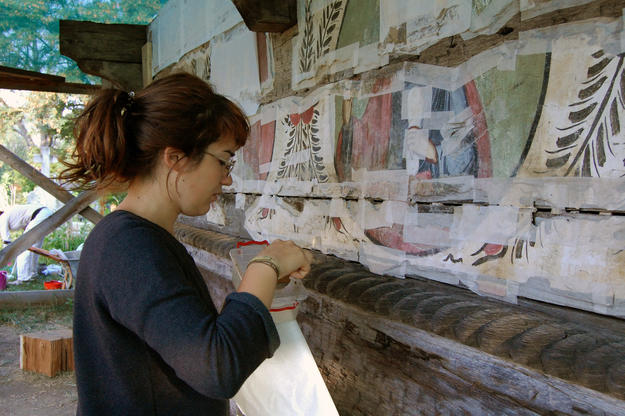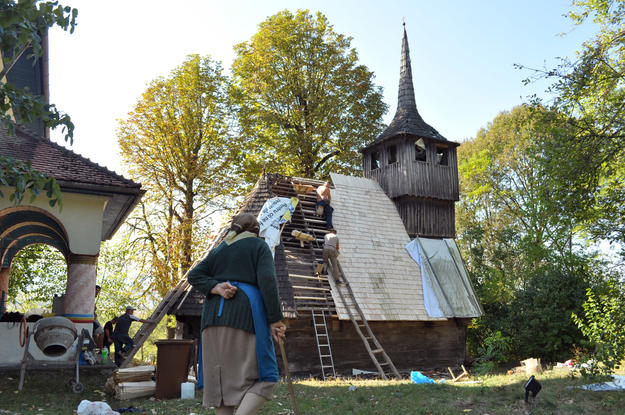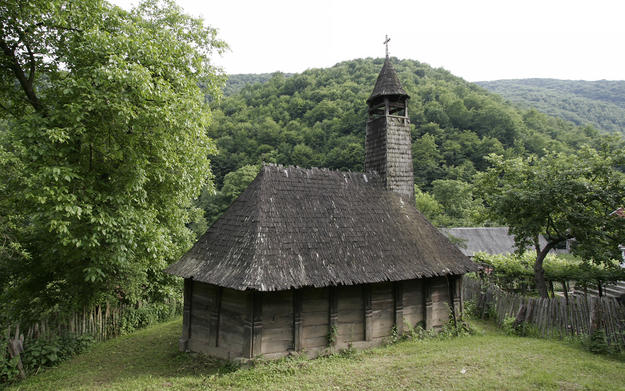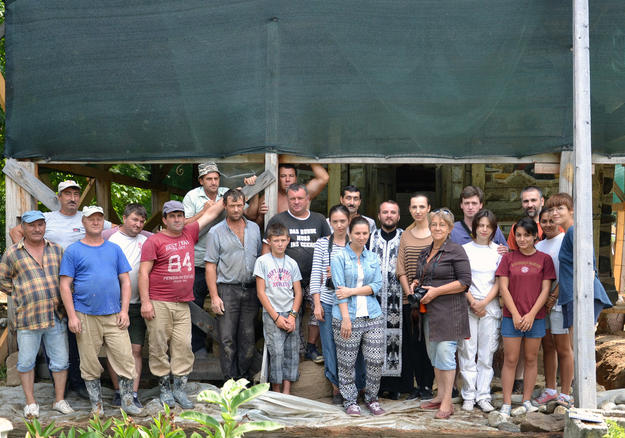Wooden Churches of Northern Oltenia and Southern Transylvania
A large number of traditional wooden churches survive in Romania's northern Oltenia and southern Transylvania regions. Associated with small communities, the churches are modest, vernacular structures that tend to be distinguished by their privileged location, painted decoration, and the skill and care that went into their construction. Wood from Romania's thick forests lies at the heart of local architectural traditions, as does the technique of building with notched interlocking timbers formed with axes and handsaws.
While most of the churches in this mountainous region were constructed in the eighteenth and nineteenth centuries, some of the oldest date from as early as the sixteenth century and most have been modified and reconstructed over the years. In recent decades, many churches have been abandoned due to their small capacity and lack of amenities like electricity and heating. As a result, they are in an advanced state of deterioration and some are at risk of immediate collapse. Resources are needed to repair and restore the buildings, and the careful introduction of upgrades would allow the abandoned churches to be reintegrated into community life.
Community collaboration brings new life to the church of Urşi
The Wooden Churches of northern Oltenia and southern Transylvania were included on the 2014 World Monuments Watch to help ensure the success of existing restoration projects associated with the structures. Since then, we have collaborated with the Pro Patrimonio Foundation, Europa Nostra, and the National Chamber of Architects of Romania to support the restoration of the eighteenth-century wooden church in the village of Urşi, east of the Olt River. The church was constructed out of timber between 1757 and 1784, and its interior and exterior were decorated with religious wall paintings in 1843 when repairs were carried out after an earlier fire. The building fell into disuse after a new masonry church was constructed in 1913, and it was unmaintained by the time of World War II.
Following a large-scale effort to assess the conditions of the wooden churches in the region, restoration of the church of Urşi began in 2010. A temporary protective structure was erected around the building, the exterior wall paintings were stabilized, and the painted vaulted ceiling was dismantled and removed to the National University of Arts (Bucharest) for conservation.
With our support, the church was lifted off the ground using mechanical jacks in the summer of 2013. This enabled the construction of a new stone foundation and the replacement of deteriorated sill beams. After a search for oak trees with the proper dimensions, the new beams were carved with the help of carpenters from an open-air museum in Sibiu called the ASTRA Museum of Traditional Folk Civilization. To replace the nine trees that were felled, 30 new oaks were planted near the village.
The restoration of the church in Urşi has engaged a large number of volunteers including local residents and art and architecture students. In this way, the culturally and historically significant building is being reintegrated into the lives of the modern-day communities that live in the region.
In 2021, the restoration of the Wooden Church of Urși Village, Romania, received both a Grand Prix in the European Heritage Awards / Europa Nostra Awards and was selected the favorite heritage project in Europe by the general public.

